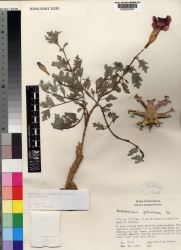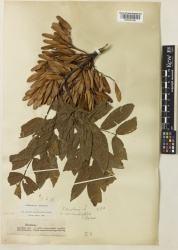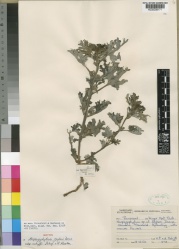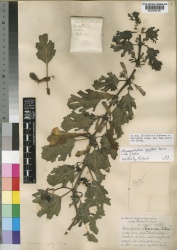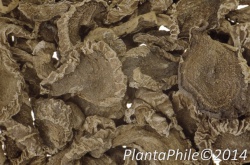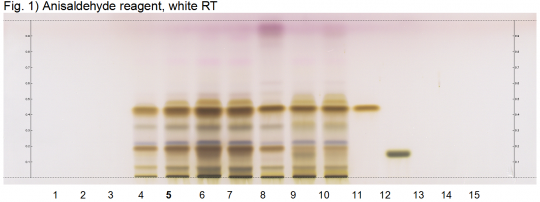Harpagophytum spp. (root)
Contents |
Nomenclature
Botanical Voucher Specimen
 |
 |
 |
 |
|
|
|
|
|
 |
|
|
Organoleptic Characteristics
Macroscopic Characteristics
|
|
Microscopic Characteristics
High Performance Thin Layer Chromatographic Identification
|
Devil’s claw (root) (Harpagophytum procumbens and/or Harpagophytum zeyheri) Lane Assignments Lanes, from left to right (Track, Volume, Sample):
Reference Sample(s) Reference: Heat 1.0 g of the powdered drug with 10 mL of methanol, sonicate on a water-bath at 60°C for 10 min. Centrifuge and reduce the filtered solution to 2 mL under reduced pressure at a temperature not exceeding 40°C. Stationary Phase Stationary phase, i.e. Silica gel 60, F254 Mobile Phase Ethyl acetate, methanol, water 77:15:8 (v/v/v) Sample Preparation Method Sample: Heat 1.0 g of the powdered drug with 10 mL of methanol, sonicate on a water-bath at 60°C for 10 min. Centrifuge and reduce the filtered solution to 2 mL under reduced pressure at a temperature not exceeding 40°C. Derivatization reagent: Anisaldehyde reagent, Preparation: 170 mL of ice-cooled methanol are mixed with 20 mL of glacial acetic acid, 10 mL of concentrated sulfuric acid and 1 mL of anisaldehyde, Use: Dip (time 0, speed 5), heat at 100°C for 3 min. Detection Method Saturated chamber; developing distance 70 mm from lower edge; relative humidity 33% Other Notes Images presented in this entry are examples and are not intended to be used as basis for setting specifications for quality control purposes. System suitability test: Harpagoside: brown zone at Rf ~ 0.44; Fructose: greenish zone at Rf ~ 0.14. Identification: Compare result with reference images. The fingerprint of the test solution is similar to that of the corresponding botanical reference sample. Additional weak zones may be present. The chromatogram of the test solution shows a brown zone (Rf ~ 0.06) below the zone due to reference substance fructose. At the position of fructose there may be a greenish zone (see track 9). Above fructose there is an intense brown zone at Rf ~ 0.18, just above it a blue zone at Rf ~ 0.22 and at Rf ~ 0.32 a weak brown zone. An intense brown zone corresponding to harpagoside is seen at Rf ~ 0.44.
|
Supplementary Information
Sources
- ↑ Royal Botanic Gardens, Kew. http://specimens.kew.org/herbarium/K000057627
- ↑ Royal Botanic Gardens, Kew. http://specimens.kew.org/herbarium/K000901661
- ↑ Royal Botanic Gardens, Kew. http://specimens.kew.org/herbarium/K000058171
- ↑ Royal Botanic Gardens, Kew. http://specimens.kew.org/herbarium/K000057642
- ↑ Royal Botanic Gardens, Kew. http://specimens.kew.org/herbarium/K000058191
- ↑ PlantaPhile http://plantaphile.com/
- ↑ HPTLC Association http://www.hptlc-association.org/
